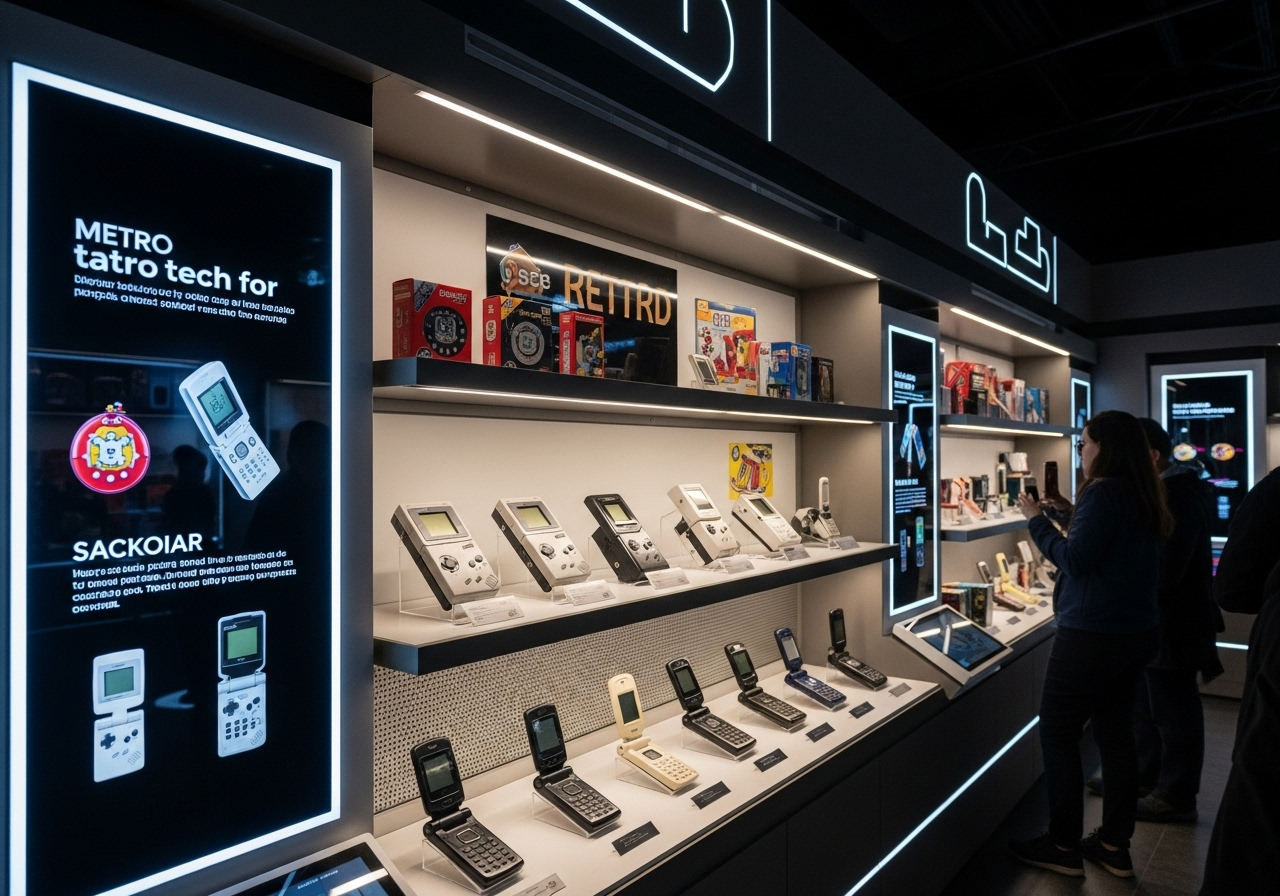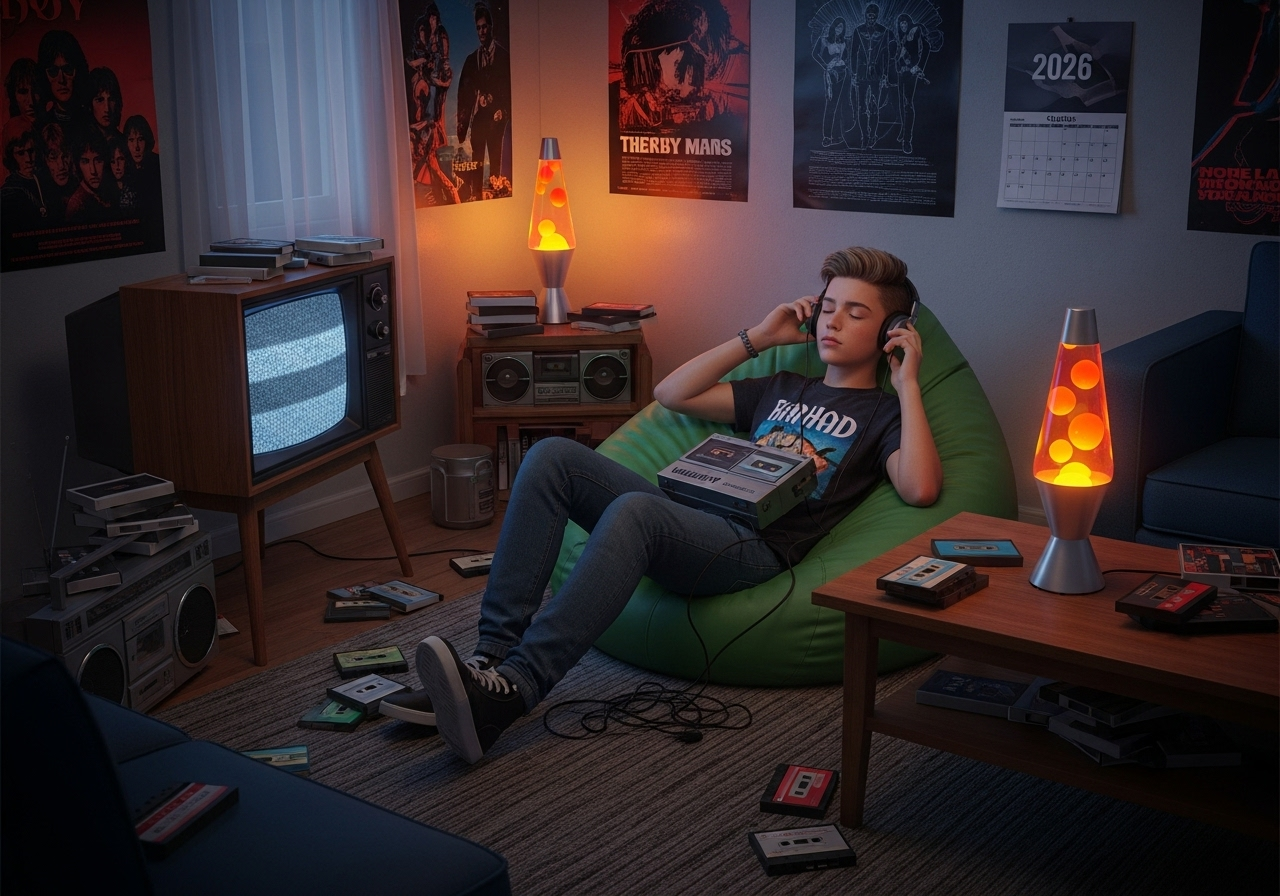Retro Tech That's Cool Again: What's Back in Style?
Logan Webb
2025-09-18
6 min read

In an age where technology evolves at breakneck speed, something fascinating is happening in the world of consumer electronics and gadgets. While we carry supercomputers in our pockets and stream everything from the cloud, there's a growing movement toward embracing the analog and the vintage. From vinyl records spinning on turntables to instant cameras capturing moments with that distinctive chemical-developed charm, retro technology is experiencing a remarkable renaissance in 2026.
The Vinyl Revival Continues to Spin
Perhaps no retro technology exemplifies this trend better than vinyl records. After nearly disappearing in the 1990s, vinyl sales have been climbing steadily for over a decade, and in 2026, they show no signs of slowing down. The format that many declared dead has become a symbol of authentic music appreciation, attracting both older generations who remember its original heyday and younger listeners discovering its unique appeal for the first time. The resurgence of vinyl speaks to something deeper than mere nostalgia. In our digital age, where music can be instantly accessed, skipped, and forgotten, vinyl demands intentionality. Playing a record requires physical interaction, patience, and presence. You must carefully place the needle, listen to entire album sides, and treat the medium with respect. This ritualistic aspect creates a more meaningful connection between listener and music that streaming services, despite their convenience, cannot replicate. The sound quality debate surrounding vinyl versus digital has passionate advocates on both sides, but many listeners simply prefer the warm, organic sound that analog recording produces. The subtle imperfections, the gentle surface noise, and the dynamic range limitations that audiophiles once tried to eliminate have become cherished characteristics that make music feel more human and less sterile.
Instant Gratification Meets Instant Photography
Polaroid cameras and instant photography have made a stunning comeback, particularly among younger generations who grew up in the digital photography era. Companies like Fujifilm with their Instax line and the revived Polaroid brand have created modern versions of instant cameras that blend retro aesthetics with contemporary improvements. The appeal of instant photography in 2026 lies partly in its unpredictability and permanence. Unlike digital photos that can be deleted, edited, or forgotten in endless camera rolls, instant photos are immediate, unique, and tangible. Each shot costs money and cannot be undone, making photographers more thoughtful about composition and timing. The slightly unpredictable results, with their characteristic color shifts and exposure quirks, create an authentic aesthetic that no filter can truly replicate. Social media has paradoxically fueled this analog photography trend. The imperfect, authentic look of instant photos stands out in feeds filled with heavily processed digital images. These physical photographs become conversation pieces, gifts, and decorative items in ways that digital images rarely achieve.
Gaming Goes Retro
The gaming industry has witnessed an extraordinary revival of retro consoles and arcade-style games. Nintendo's success with miniature versions of classic consoles sparked a trend that has expanded across the industry. Companies are releasing modern versions of vintage gaming systems, complete with built-in game libraries and contemporary connectivity options. This retro gaming renaissance reflects a desire for simplicity and accessibility that modern gaming sometimes lacks. Classic games focused on immediate, intuitive fun rather than complex narratives, extensive tutorials, or online competition. The pick-up-and-play nature of retro games appeals to both nostalgic adults who remember these systems from their youth and new players seeking gaming experiences that don't require significant time investment or learning curves. The aesthetic appeal of retro gaming cannot be overlooked. Pixel art, chiptune music, and simple game mechanics have developed their own artistic appreciation. Many modern independent game developers deliberately adopt these classic styling choices, creating new games that feel authentically vintage while incorporating contemporary design sensibilities.

The Cassette Tape Underground
While not as mainstream as vinyl, cassette tapes have found their own dedicated revival community. Independent musicians and small record labels have embraced cassettes as an affordable way to release physical music, while collectors appreciate their intimate scale and unique sonic characteristics. Cassettes offer something that digital formats cannot: the experience of creating mixtapes and the anticipation of not knowing what comes next. The format's lo-fi aesthetic has become synonymous with certain music genres, particularly in underground and experimental music scenes.
Film Photography's Artistic Renaissance
Despite smartphones having remarkably capable cameras, film photography has attracted a devoted following among artists, hobbyists, and students. The process of shooting film requires patience, skill, and intentionality that digital photography does not demand. Each frame costs money and cannot be immediately reviewed, forcing photographers to be more deliberate about their craft. The aesthetic qualities of film grain, color rendition, and dynamic range continue to be sought after, even as digital cameras become increasingly sophisticated. Many photographers appreciate the slower, more contemplative process of film photography as a counterbalance to the instant gratification of digital imaging.
Why Retro Tech Appeals in 2026
Several cultural and psychological factors explain why retro technology resonates so strongly in our current era. First, there's the concept of digital fatigue. After years of increasingly complex technology that demands constant updates, notifications, and online connectivity, many people crave simpler, more focused experiences that retro technology provides. Retro tech also offers authenticity in an age of digital reproduction. Physical media and analog processes create unique, irreplaceable artifacts that feel more meaningful than digital files that can be copied infinitely. This scarcity and uniqueness appeal to people seeking genuine experiences in an increasingly virtual world. The aesthetic appeal of retro technology cannot be understated. These devices and formats often feature beautiful industrial design, tactile controls, and visual characteristics that feel more human and organic than sleek digital interfaces. The imperfections and limitations that once drove people away from these technologies now feel like charming characteristics rather than flaws. Finally, retro technology provides a connection to cultural history and shared experiences. Using the same formats and devices that previous generations enjoyed creates a bridge across time, allowing people to experience music, photography, and entertainment in the same way their parents or grandparents did. The revival of retro technology in 2026 represents more than simple nostalgia. It reflects a deeper human need for authenticity, intentionality, and meaningful interaction with our tools and media. As technology continues to advance rapidly, these analog alternatives provide valuable perspective on what we might be losing in our rush toward digital convenience.



